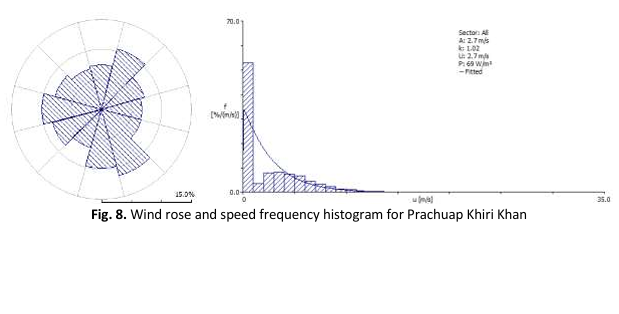A study on Wind-Wind energy for Electric Vehicles Charging Station on the Southern Highway of Thailand
DOI:
https://doi.org/10.37934/ard.133.1.124146Keywords:
Wind energy potential, wind power , WAsP, electric vehicles, charging stationAbstract
This comprehensive research delves into the energy landscape of Southern Thailand. Leveraging sophisticated tools such as WAsP, the study conducts an exhaustive examination of the wind energy potential, taking into account the intricate geographical and climatic conditions of the region. The research meticulously fulfils its objectives, encompassing the assessment of wind potential based on multifaceted criteria, the development of a comprehensive wind atlas, and an intricate simulation of annual energy production. Moving beyond the technical realm, the study extends its scope to scrutinize the proposed electric vehicle charging stations from an economic perspective. This facet of the research aligns with global sustainability initiatives, adding a practical and applicable dimension to the findings. A notable outcome of the study is the strategic identification of five charging stations in the southern provinces of Thailand, namely Songkhla, Prachuap Khiri Khan, Surat Thani, Chumphon, and Narathiwat. This strategic placement is poised to play a pivotal role in supporting the escalating prevalence of electric vehicles in the region. The research pioneering in its nature, contributing significantly to the ongoing global transition towards renewable energy sources. The findings furnish foundational insights that contribute to both academic discourse and practical applications, not only in southern Thailand but also as a valuable reference for similar endeavours globally. In terms of specific values, the study conducts a detailed analysis of the average mean wind speed, wind power density, and other critical parameters. For instance, the average mean wind speed values for Chumphon, Narathiwat, Prachuap Khiri Khan, Songkhla, and Surat Thani are reported as 2.88 m/s, 4.18 m/s, 3.21 m/s, 5.43 m/s, and 2.16 m/s, respectively. Similarly, the average wind power density values for the mentioned locations are 77 W/m², 225 W/m², 139 W/m², 370 W/m², and 31 W/m², respectively. These metrics, along with other detailed statistical analyses, contribute to a nuanced understanding of the hybrid energy potential in southern Thailand.
Downloads























